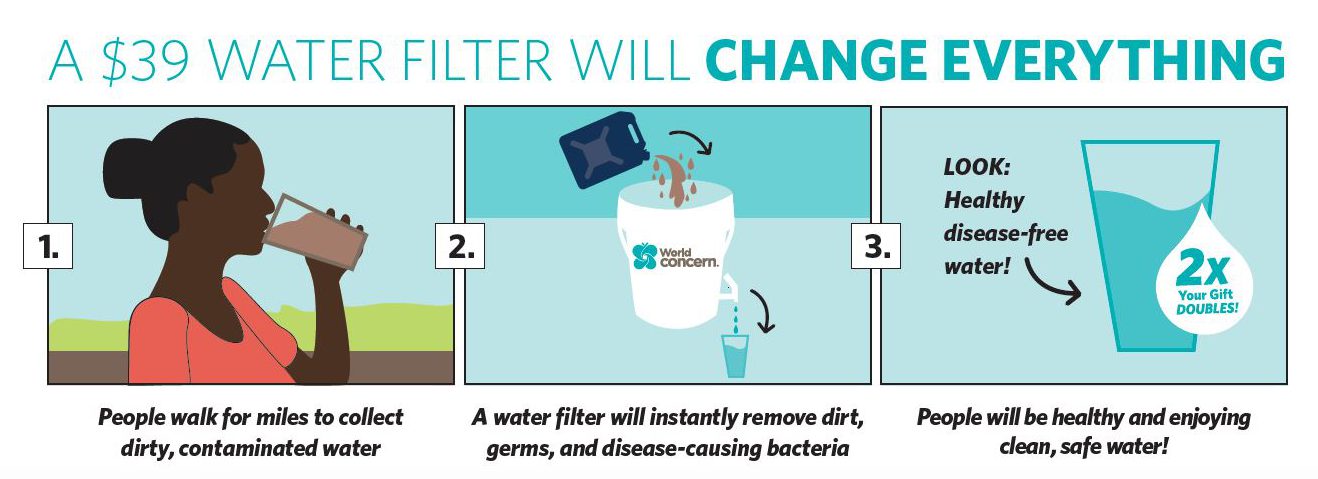Humanitarian Aid
3 Steps to Clean Water: How Water Filters Change Lives

You may have seen an image of or even given a water filter, but do you know how they work?
In the middle of a clean water crisis, simple water filters are life-saving. They effectively eliminate germs, bacteria, and parasites that cause deadly waterborne diseases.
How Does a Water Filter Work?
Inside what looks like an oversized plastic bucket there is a ceramic filter. When water is poured into the bucket and on top of the filter, water slowly seeps through the lining and into the bucket below.
The ceramic filter is what catches all the dirt and parasites, turning the dirty water into clean, safe drinking water. Since the holes in the ceramic filter are so small, it takes a few hours for the water to filter through when the bucket is completely full.
After waiting, all that’s left to do is turn the tap and watch the clean water flow! Filtered water does not have to be boiled, either, because it is safe to drink as is. Ceramic filters remove about 99% of germs and bacteria.
One of the most cost-effective solutions to the clean water crisis, water filters are simple for families to use, last a long time, and reduce water-related illness.

How Does Clean Water Transform Communities?
For many communities around the world, access to clean water is a rarity.
In rural Kenya, drought has eliminated many sources of water—clean or contaminated. In Bangladeshi villages, water is prevalent but the wells improperly dug, contaminating them with arsenic.
Without clean water, children and their families fall ill with deadly waterborne diseases such as cholera, dysentery, and stomach parasites.
Too ill to go to school or work, life slows to a halt in these communities. Parents aren’t able to provide for their children or send them to school, and children aren’t able to attend school due to illness and cost. Crops dwindle down to nothing and food grows increasingly scarce.
When not sick, time is spent walking to various sources of water, often communal watering holes shared with livestock miles away from a village. But once the water is collected, the cycle perpetuates without the means to purify the water and even more fall ill.
Poverty cannot end without access to clean water.
Once a community has clean water, families are healthier, mothers and fathers are able to care for their children, their children are healthy enough to attend school, and can begin to learn how to one day lift their communities out of poverty.
All with access to clean water.